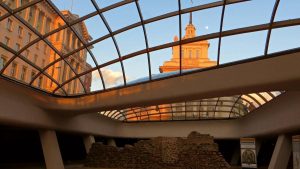
The City of Lights seduces with an extraordinary fusion of culinary escapades, historical monuments, and unusual activities.
But do you know where this nickname comes from?
Or what the best places to socialize in the French capital are?
The following 33 cool facts about Paris will answer the above questions and reveal more peculiar details of the city’s image.
Dive right in and get to know the most intimate secrets of the capital of France!
Curious Facts About the Parisian Culinary Scene
One of the best Paris travel tips we can give you is that you can’t get acquainted with the city without dipping your toes into its culinary scene. The food of France is one of the top reasons travelers can’t get enough of the city. Discover these facts about Paris’ gastronomy to fully understand the true charm of the French capital.
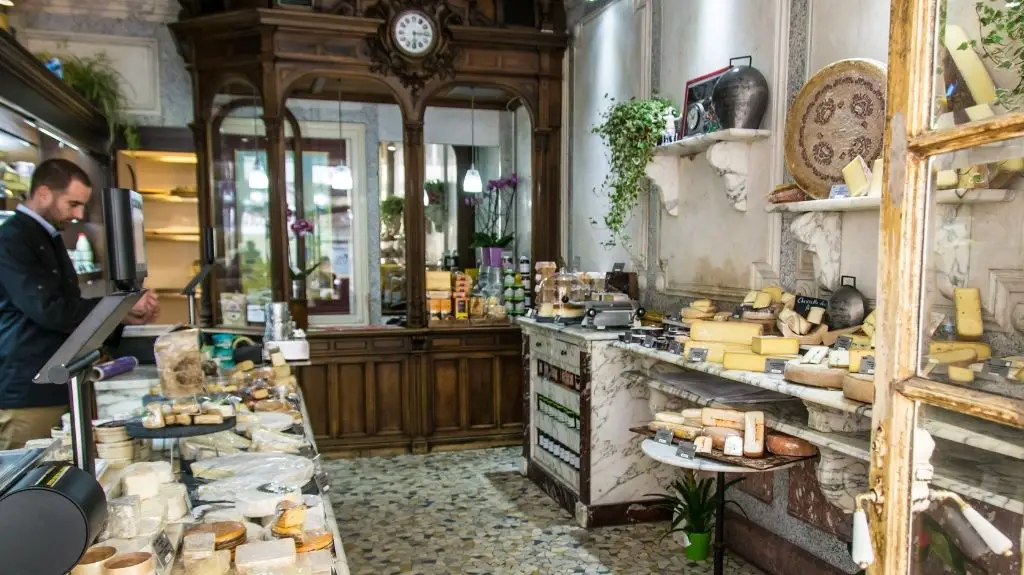
- Paris is home to 70 Michelin-starred restaurants. Did you know that the capital city of France prides itself on more than 9,000 restaurants and approximately 1,800 bakeries? The world-famous Le Guide Michelin has listed 70 of these establishments. What’s even more impressive is that 10 of them have all three stars. The best of the best include Le Pré Catelan, Pierre Gagnaire, Arpège, and L’Ambroisie.
- Paris hosts the biggest wholesale food market in the world. The size of the Rungis International Market is mind-bending. The market stretches across a whopping 6 sq. mi (15.5 sq. km). Estimates suggest it houses more than 2 million tons of fruit, veggies, fish, and dairy products every year.
- The Bloody Mary cocktail originates in Paris. The Ritz Hotel in the French capital is the birthplace of the Bloody Mary cocktail. The curious part is that Ernest Hemingway is allegedly the person who inspired it. He insisted that his alcoholic drink must not smell like alcohol. The bartender added tomato juice to his vodka, and – voilà! – the cocktail came to light.
- Paris has one of the oldest coffee cultures in the world. You can refer to the city as The Cradle of Coffee Shops because the first café in the world opened its doors way back in 1686. Located in the 6th arrondissement, Le Procope paved the way for coffee shops as we know them today. Tip: Another gorgeous European city with a fascinating coffee culture is Vienna.
- There are nearly 17,000 coffee terraces in Paris. The long-lasting tradition known as être en terrasse (sitting on a terrace) is a peculiar part of the Parisian culture. Those who don’t have a terrace of their own at home use the coffee terraces to socialize. Hundreds of Paris cafés offer inexpensive espresso on their terraces, including Le Caminito Cabaret, Cardinal Saint-Germain Café, and Le Bistrot du Chai 33.
- You’ll find more than 1,000 types of cheese in Paris. Having fromagerie dilemmas? When in Paris, you can put an end to them by joining a cheese and wine tasting tour. Chances are you’ll love sampling cindered goat cheese or washed rind cheese, to name a few. Another option is a tasting course, such as the one offered by Le Cheese Geek.
- Parisian bakers need to follow The Bread Decree. No, we’re not kidding. The “bagette law” includes specific rules and requirements regarding the exact size and consistency of the dough. There’s also an annual contest between bakers with fierce competition. The winner gets a contract to supply the presidential palace for the next year.
Unusual and Fun Facts About the Attractions of Paris
The banks of the River Seine are a UNESCO World Heritage Site. The following section with facts about Paris’ attractions reveals peculiar details about some of the most popular monuments you can find in the City of Lights.
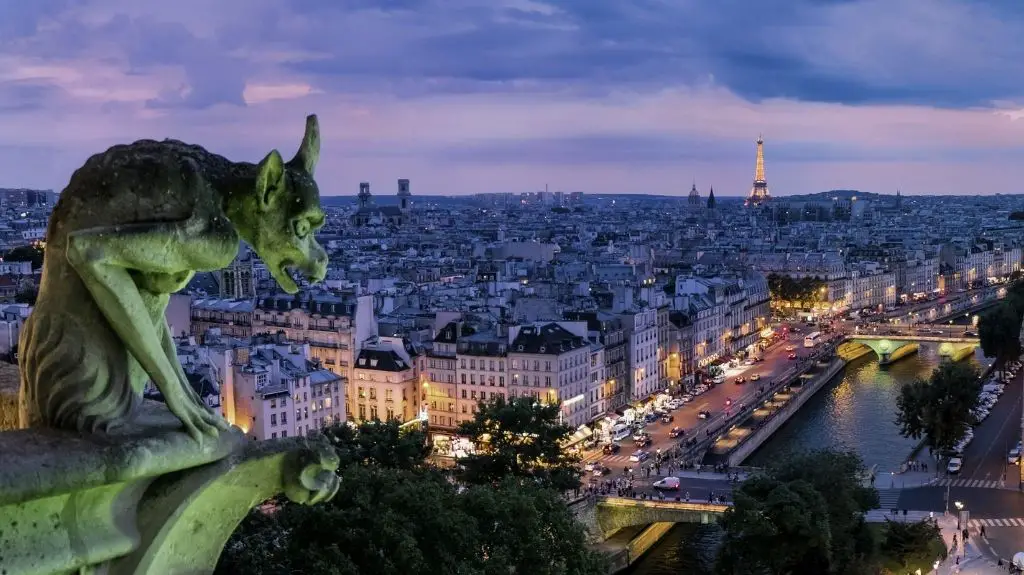
- The biggest bell of the Notre-Dame de Paris has a name. The cathedral boasts 10 bells in total, and the largest one is Emmanuel. The massive toll weighs almost 30,000 lbs. (13,608 kg). Emmanuel sounded in the background of many historic events, including the liberation of Paris after the end of WWII, as well as the funeral of Charles de Gaulle.
- Paris has its own Statue of Liberty. It’s a well-known fact about New York that the Statue of Liberty standing on Liberty Island was a gift from France. However, many people are not aware that there are 10 smaller exact replicas of the statue scattered around France. You can find five of them in Paris. The biggest one stands tall on an artificial island in the River Seine called Île aux Cygnes.
- There was a plan for the Eiffel Tower’s removal. That’s one weird fact about Paris as no one can imagine the city skyline without the famous landmark nowadays. However, it was designed to be a temporary installation. Local authorities intended to remove the structure 20 years after its completion in 1889. Construction began in 1887 – just on time to be among the World Fair’s attractions. Thankfully, the tower remained untouched and it eventually turned into one of Paris’ most visited landmarks. Despite the fact that it’s over 130 years old now, it’s one of the newest, too.
- People love referring to Paris as The City of Lights. There are two reasons for the existence of this nickname. First, France’s capital city was among the first in the world to introduce street lighting. The second reason stems from the efforts of Louis le Grand (Louis the Great, a.k.a. the Sun King) to enlighten the masses and to restore law and order in Paris in the middle of the 17th century.
- Pont Neuf (“New Bridge”) is actually the oldest bridge in Paris. Despite its name, Pont Neuf is currently the oldest structure crossing the River Seine in Paris. The name served to distinguish it from older bridges lined on both sides with houses. It was completed in 1606 and outlived the other constructions which were replaced with modern ones.
- The Paris Catacombs are not fully explored. Here’s one of the most unusual facts about Paris: nobody knows the combined length of the Catacombs. Estimations suggest they stretch for at least a couple of hundred miles. Authorities have yet to discover all the secrets lurking beneath Paris. On one occasion, they even found a fully operational theater and a bar. The people who built them were never found.
- Paris owns the second-busiest subway system in Europe. The French capital has one of the longest and most crowded underground networks on the Old Continent, inferior only to Moscow’s. Over 4 million people use the metro in Paris every day. One unpleasant fact about the Metropolitan is the lack of station announcements, so be careful when traveling.
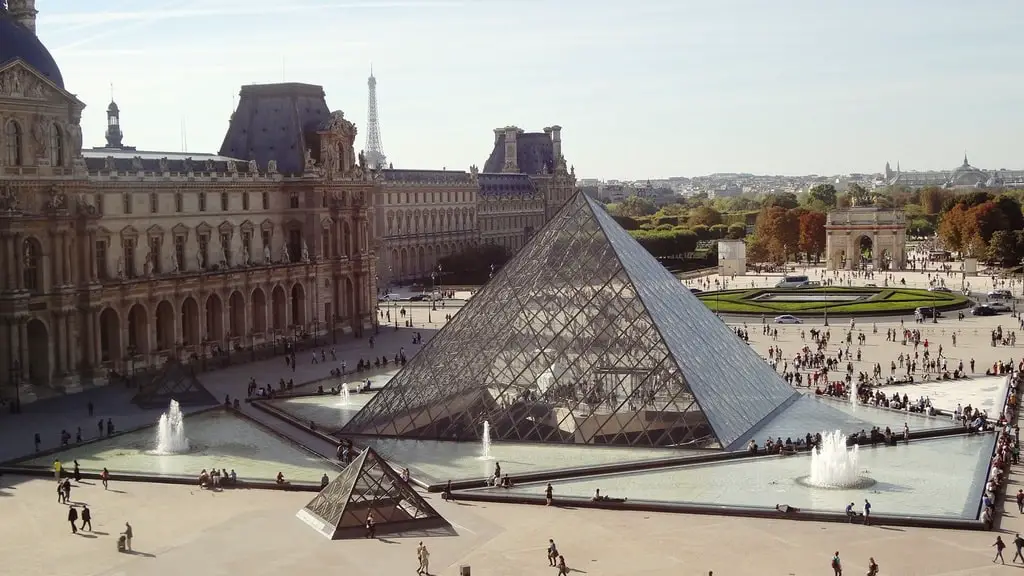
- You’ll need more than a month to admire every item displayed in the Louvre. Estimations suggest that it’ll take you no less than five weeks to see all 35,000 works of art and 380,000 objects exhibited in the largest art gallery in the world.
- There is a lake under the Paris Opera House. A huge water tank that Parisians call a lake lies beneath the Paris Opera House. The unusual location is only open to fire brigades who practice night swimming in it. The water tank was the original inspiration for the lair of the Phantom of the Opera.
- Paris is home to a whopping 830 libraries. You have a chance to discover some of the most magnificent libraries in Europe in Paris. The biggest one is also the oldest and most compelling – Bibliothèque Mazarine. The collection of books and manuscripts kept there exceeds 600,000 volumes. Other libraries worth visiting include Bibliothèque François Mitterand, Bibliothèque Publique d’Information, and Bibliothèque Historique de la Ville de Paris.
- A small brass plate marks the center of Paris. Just outside of Notre-Dame de Paris, you’ll find the so-called Point Zero. The octagonal plate marks the heart of the city. It serves as a starting point measuring distances between Paris and other locations in France. Numerous good luck rituals are related to this spot. This is why you can often see a lot of coins scattered around it.
- Directors constantly use the streets of Paris as a movie décor. On average, the French capital becomes the scene of around 10 different productions per day. From action movies to TV commercials, the City of Lights welcomes filming crews from every corner of the globe. The French never charge for filming, except when the scenes take place at locations such as gardens, museums, libraries, and other public facilities.
- Paris boasts 2,000+ hotels. From countless cheap motels to 85 of the world’s best 5-star hotels, Paris offers every type of accommodation imaginable. Their combined capacity exceeds 120,000 beds. Throw in an estimated 80,000 private homes offered by platforms such as Airbnb, and your choice becomes almost unlimited. No wonder that tourists spend $10+ billion annually in Paris.
- The Paris Syndrome is a real form of cultural shock. Many visitors experience this soon after they set foot in the city. The difference between the real atmosphere of the busy metropolis and the idyllic expectations tourists have often results in severe anxiety referred to as the Paris Syndrome.
Interesting Facts About Paris’ Rich History
From the place of the first photograph in the world to the urban legends about the Louvre, we bet that these peculiar historical facts about Paris will surprise you at least once. Let’s see if we’re right.
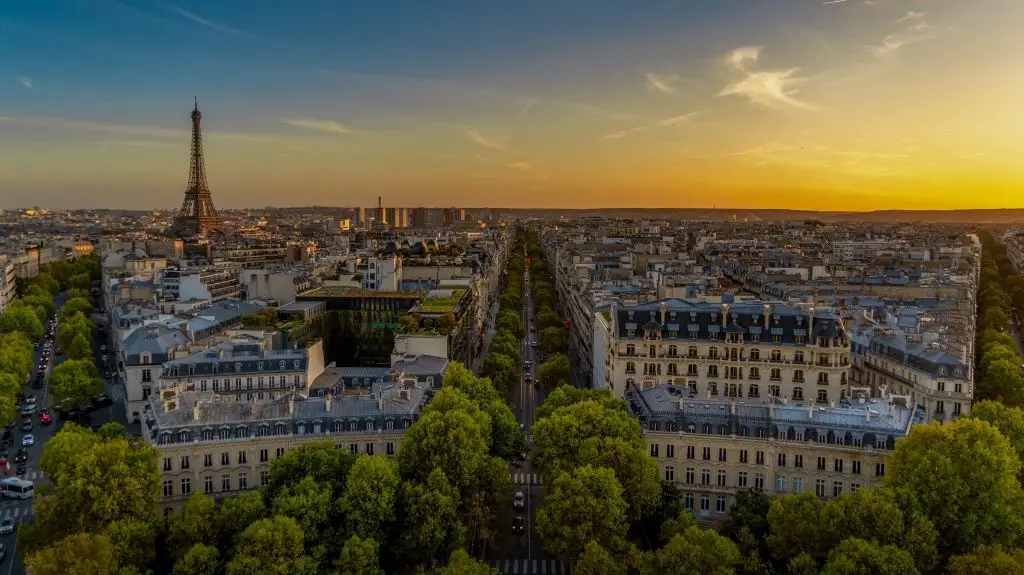
- Paris used to be called Lutetia in Roman times. Today’s capital of France was a Roman Empire city named Lutetia a few decades Before Christ. The Arènes de Lutèce theater and the Thermes de Cluny public baths date back to the old city of Lutetia.
- Paris is the home to the second oldest European university. The University of Paris was founded in 1150, meaning that it is one of the oldest academies in the world. It is also the second oldest in Europe after the University of Bologna.
- Paris became the hotspot for art, science, and architecture during the French Renaissance. The French capital was the scene of intellectual and cultural revolutions mainly during the 16th century. As a result, new architecture trends settled in. This was also the period when construction of the Tuileries Palace and the Louvre museum began.
- The first photograph was taken in Paris. Louis Daguerre made history in 1839 when he did something many others tried before him but failed. He became the father of practical photography as we know it today. Daguerre took the world’s first picture at Place de la République.
- The Louvre was once called Musée Napoléon. During Napoleon’s reign as Emperor, France amassed a significant part of the collection displayed in the Louvre today. The famous ruler stole many of the priceless artworks from other European countries.
- The first automobile rally in the world started in Paris. Back in 1894, more than 20 steam and gas-powered vehicles stormed off from Paris to Rouen. The race was set in July and became the first official event of its kind in the world. The pace was slow by today’s standards: the average speed was merely 12 mph. However, the importance and the excitement of the race are undeniable.
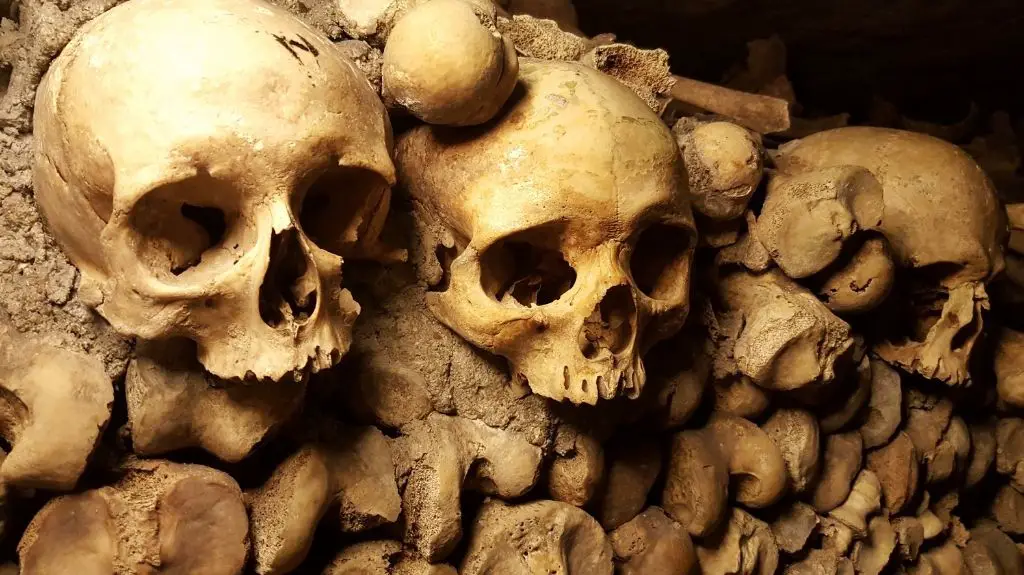
- Part of the city’s underground network was abandoned on the brink of WWII. Authorities have forgotten about large sections of Paris’ metro system since the late 1930s. They have remained unused since the dawn of WWII, but people keep visiting them illegally. The most famous stop – Croix Rouge – has a ghostly ambiance that attracts urban explorers. A small part of the abandoned network is accessible during Heritage Days every year.
- Hitler wanted to destroy the Eiffel Tower during WWII. When the Nazis raided Paris in 1944, the dictator wanted to tear down the landmark. Luckily, General Dietrich Hugo Hermann von Choltitz refused to follow his command, and the tower survived.
- You can still find signs of an old guillotine installation on the streets of Paris. A few dark spots at the corner of La Croix-Faubin Str. and Roquette Str. show the exact location of the former gruesome contraption. The guillotine was used in the middle of the 19th century for public executions in front of a former prison.
- The Catacombs of Paris hide the remains of more than 6 million people. The construction of the catacombs started nearly 250 years ago. King Louis XVI realized that cemeteries would not accommodate all deceased citizens and initiated the project. For that reason, in 1786, authorities began filling in the endless halls of Paris’ former quarries with bones using wagons.
- Paris was home to some of the most famous artists in the world. More than a few influential people have roamed the city’s streets. Legendary figures such as Ernest Hemingway, Salvador Dali, Pablo Picasso, Henri Matisse, James Joyce, and Jean-Paul Sartre lived in the City of Lights.
- An urban legend suggests the Louvre Pyramid consists of precisely 666 glass panes. The myth started when the museum issued a brochure suggesting the number 666. Local newspapers also mentioned the curious fact. However, this is not true – the pyramid consists of 673 panes in total.

Which Fun Facts about Paris Surprised You the Most?
There you have it – the coolest and most interesting facts about Paris.
No matter whether you’re into architecture, underground tunnels, or coffee culture, the French capital holds enough temptations for you to explore.
We have revealed just a few details about the most peculiar sides of the City of Lights, and we hope you’re ready to discover even more on your own.
Now, we want to know:
Which facts surprised you the most?





